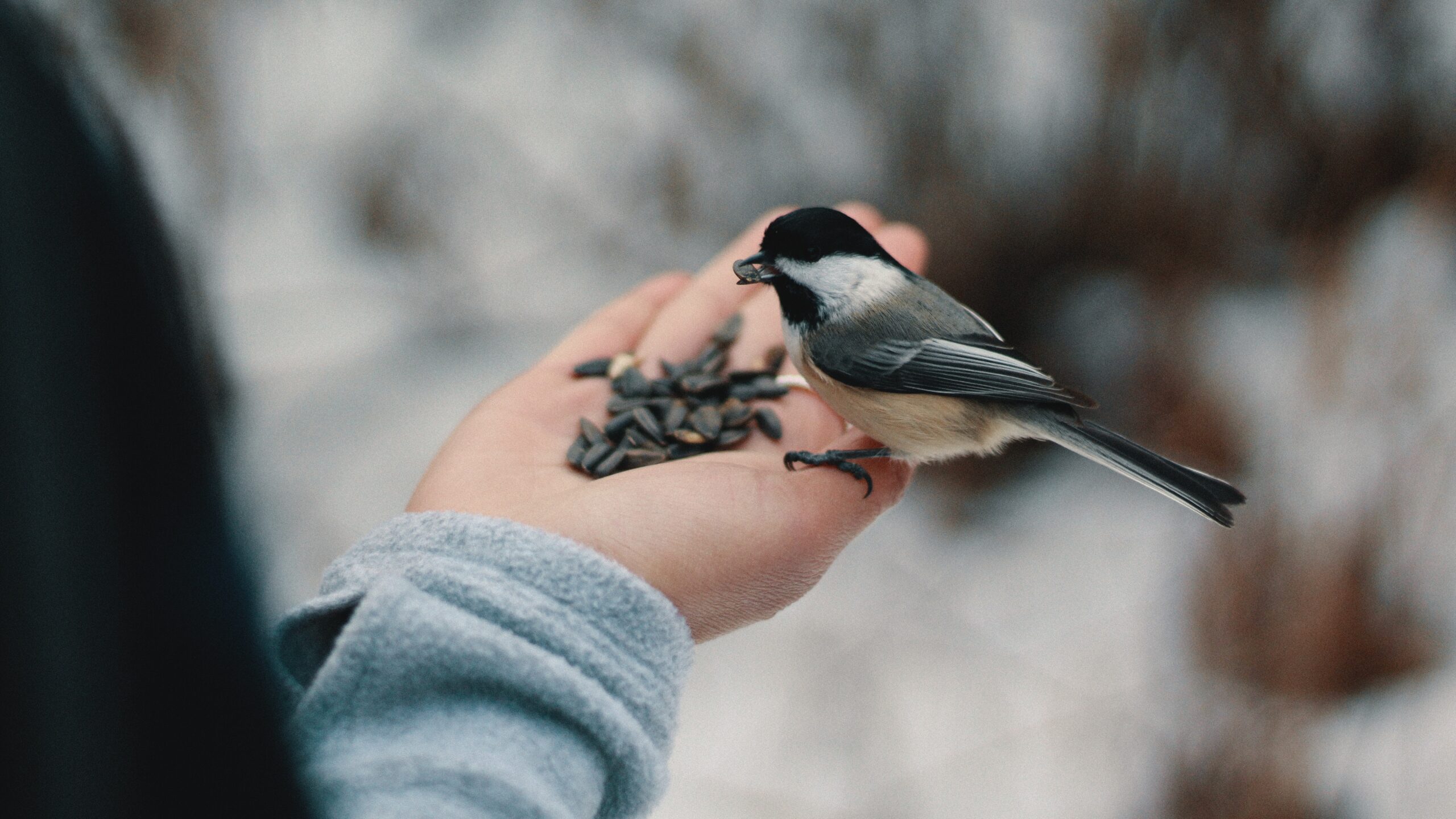Winter is a time of reflection, but for some it can also be a lonely time. Connecting with nature is proven to reduce feelings of loneliness and boost overall wellbeing. One way to connect with nature is to become friends with the wild birds in your area. No, you don’t need to be Dr. Doolittle to establish a surprisingly satisfying relationship with birds that benefit you both. Here’s the why and how of befriending birds.
Why Make Friends with the Birds?
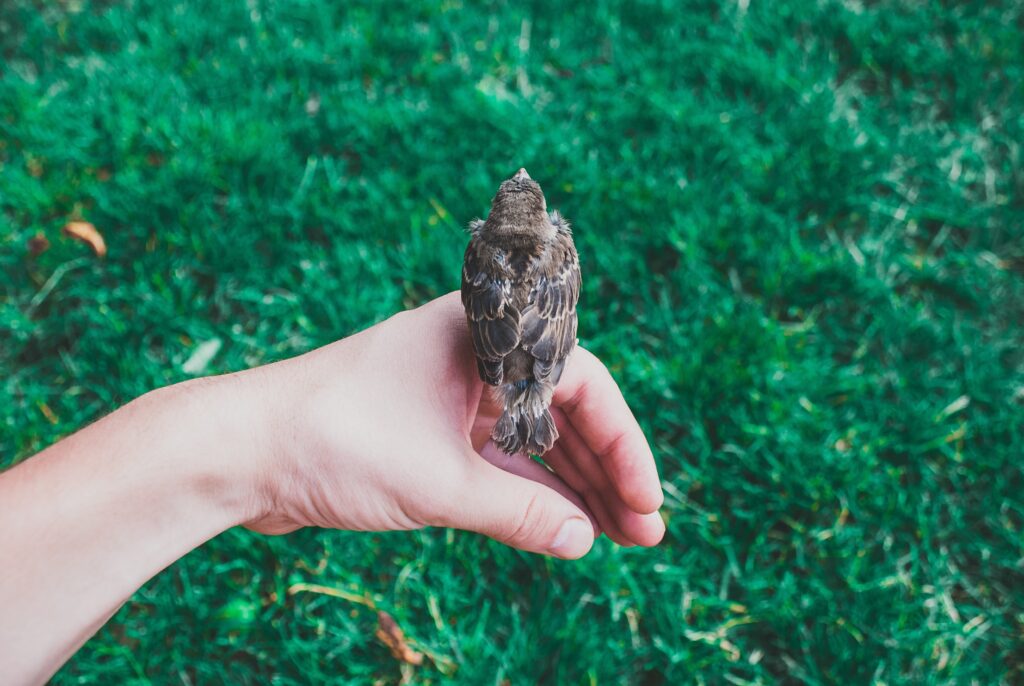
It benefits us
Observing, learning about, and interacting with birds encourages mindfulness, gratitude, and in-the-moment thinking. It also reduces the time and inclination one might have to ruminate in an unhealthy way. Plus, it’s proven to lessen the symptoms of depression, anxiety, and stress.
To learn more benefits of birds and nature, read our post, “Nature: The Ultimate Stress Reliever.”
It benefits them
Believe it or not, winter can also be a tough time for birds too. Between a scarcity of insects and other natural food sources to braving the snow, rain, and cold to providing for their new families, it’s a lot of pressure! We can help support our feathered friends by offering them high-energy foods, and places to shelter and nest.
To learn more about how to help birds during winter, read our posts “Winter is for the Birds: The Importance of Winter Wild Bird Feeding” and “More Winter Bird Feeding Tips.”
How to Be a Bird Friend

We’ve discussed the why, now let’s get into the how. How, exactly, do we become friends with birds? I mean, we can’t exactly invite them over for a glass of wine and a chat. So how do we attract them to our yards and gardens, build their trust, and show them we appreciate them? We’ve come up with a few ways:
Learn about them
Can you identify the birds that come to your bird feeders, or those you see when you’re out walking your neighborhood or hiking? If not, start there. Take a journal and a field guide with you and make notes on the birds you see, their markings and coloring, the sound of their bird call, their behaviors (swooping, nesting, ground feeding, etc.). There are also tons of apps, like eBird and Merlin, to help you identify and learn key facts about the birds in your area.
Learn the 10 most common backyard birds in Southern California.
Offer them a safe, supportive environment
Much like our human friends, birds respond well to safe, calm, and inviting environments—and are more likely to frequent those places. What does this entail for birds? It means a place away from noise and traffic, one that offers shelter from the elements and predators (including the neighborhood cats), and one where they can eat, drink, and rest.
Interested in creating a bird sanctuary in your own backyard? We’ve got you covered.
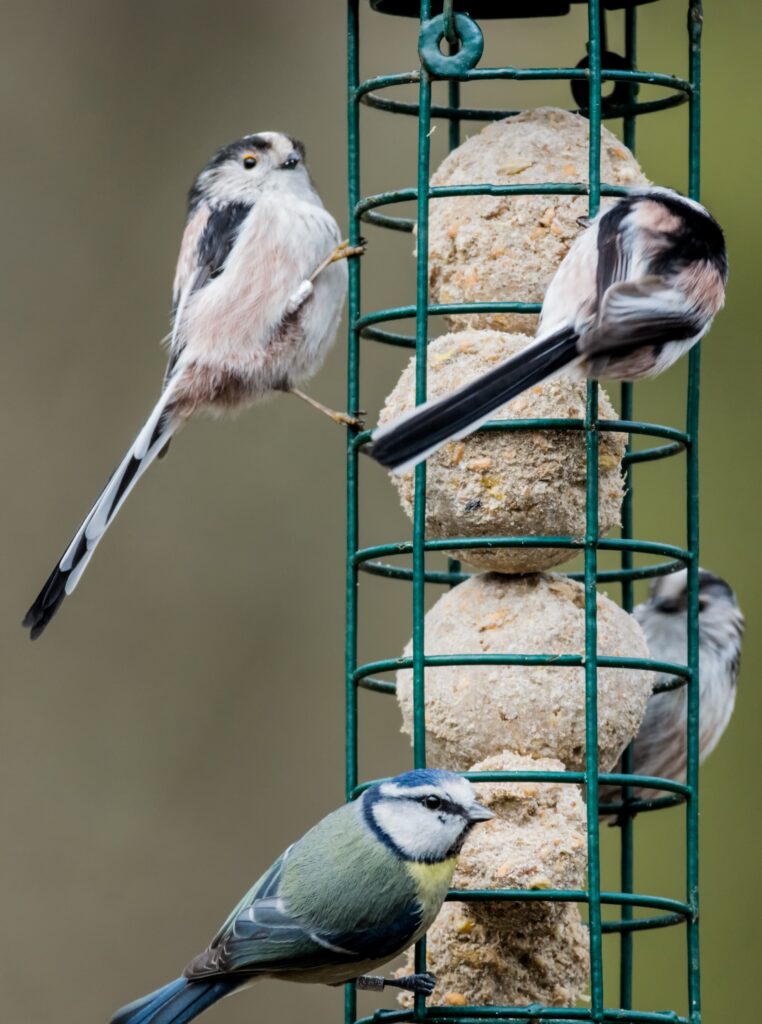
Be consistent
No friendship works without mutual trust, and it’s the same with birds. As natural prey, birds are ever on alert for danger. That just means we have to work a bit harder, and more consistently, to build their trust. One of the ways we do this is by being consistent with keeping our bird feeders and birdbaths filled. Birds are pretty forgiving if you forget for a few days, but if your bird feeder goes empty more often than not, they will find other places to eat. Same goes for your birdbath: if it’s usually empty, or the water is always dirty, it’s likely your bird friends won’t hang around.
Want to know the real reasons birds aren’t visiting your bird bath? We’ve got six.
Birds Help Seniors Battle Loneliness
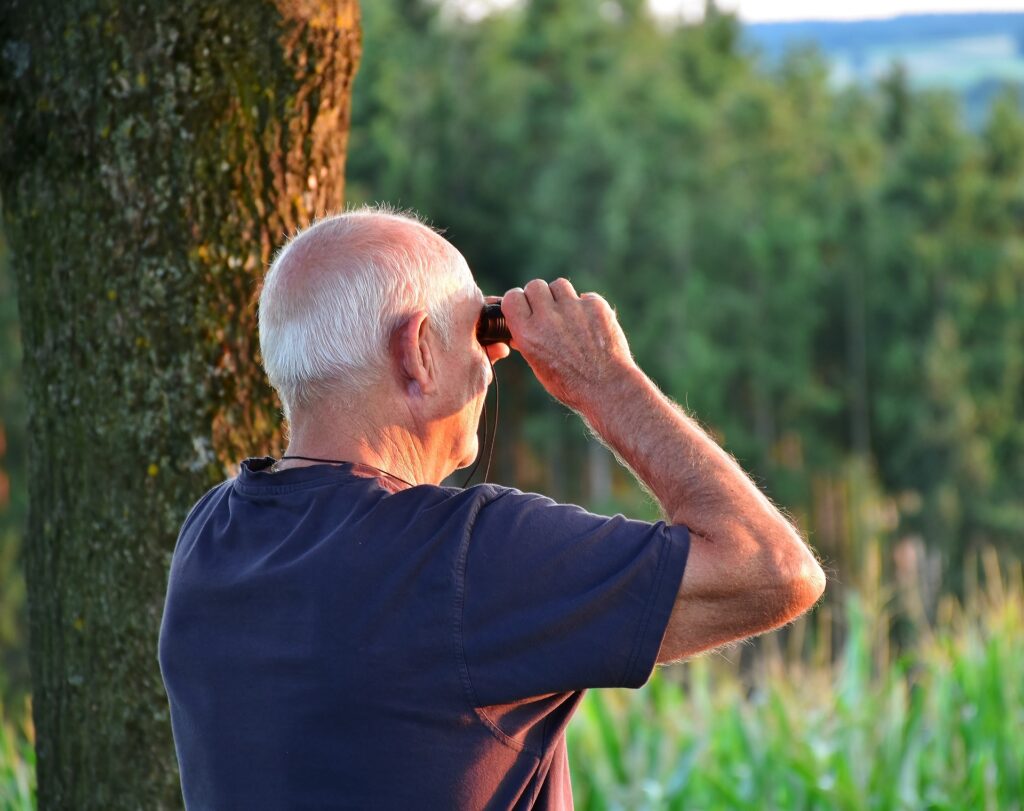
Along with lowering blood pressure and slowing the production of stress hormones, birdwatching has many other benefits for older adults. For one, it gets them out in nature and provides a backdrop for socialization. Birdwatching walks and birding groups offer a chance to meet new friends with common interests. And even for seniors who aren’t as active, or those who are housebound, a bird feeder in the window can mean the difference between a gloomy day and one filled with wonder and joy.
Are you a senior, or do you know an older adult, who loves to learn about birds? Check out Chirp’s upcoming Bird Walks.
Birds Teach Young Ones Key Lessons

Patience, empathy, compassion, stewardship: who doesn’t want to teach their children these important life lessons? But did you know that learning about birds can actually be powerful educators for our young ones? In fact, studies show that teaching kids at a young age about birds and nature actually has a profound effect on them when it comes to developing healthy relationships with peers, parents, and teachers.
Check out these eight fun ways to teach your kids about birds.
Building Better Bird Friendships
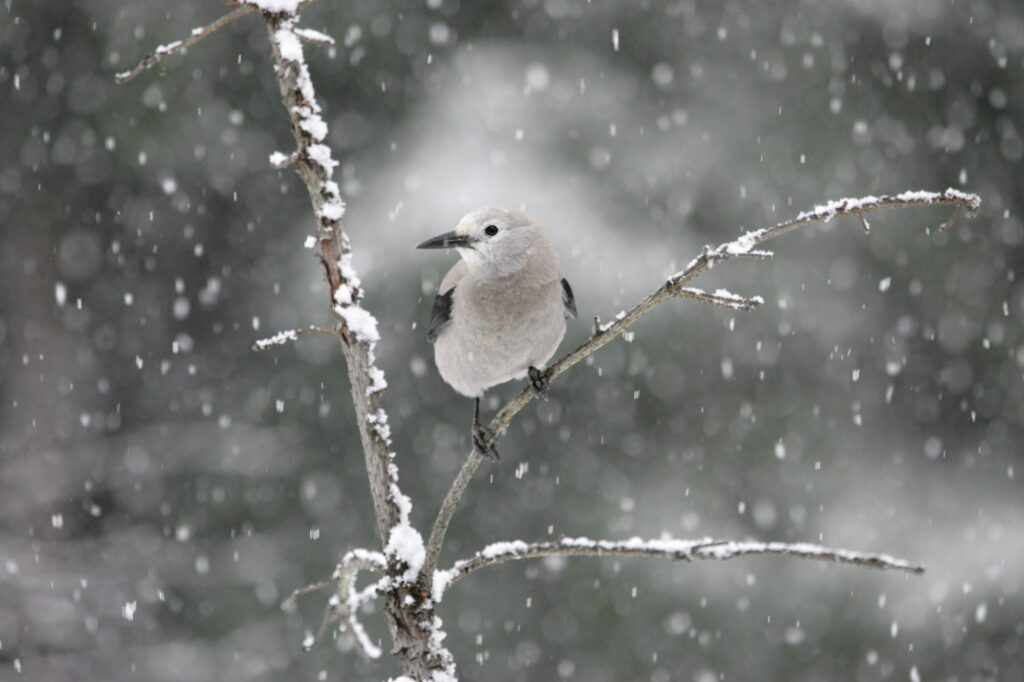
Did you know that our bird friends are in danger? Since 1970, their population has dwindled alarmingly: we’ve lost 3 billion birds in that time alone! Want to know how you can help? Check out Chirp’s blog post “How You Can Help the Declining Bird Population” for some actionable steps.

